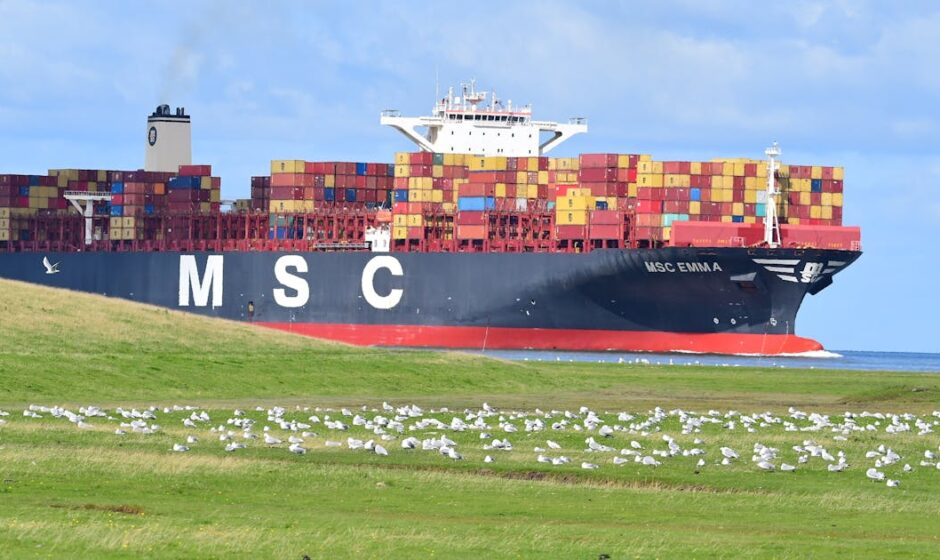Introduction: In today’s fast-paced global trade environment, the shipping industry is experiencing significant technological advancements, and among the most prominent is shipping tokenization. Tokenization refers to the process of converting rights to a real-world asset into a digital token on a blockchain. It’s a crucial step towards improving transparency, reducing inefficiencies, and enhancing the security of trade transactions. However, one key issue is preventing tokenization from reaching its full potential: interoperability.
Interoperability refers to the ability of different systems, platforms, and applications to work together seamlessly. In the context of shipping tokenization, it means that the numerous blockchain platforms and digital solutions used by stakeholders need to be compatible with each other. Without this, the industry faces roadblocks to the widespread adoption of tokenized shipping. This blog explores the significance of interoperability, the current challenges it presents, and potential solutions offered by industry leaders.
The Importance of Interoperability in Shipping Tokenization
The global shipping industry operates across various jurisdictions, each with its unique systems, regulations, and digital platforms. With the advent of blockchain technology, many companies have adopted tokenization to streamline their operations. However, the lack of interoperability among different blockchain solutions is creating silos, preventing these systems from effectively communicating with one another.
In practical terms, shipping tokenization is meant to track assets, reduce fraud, and simplify processes such as customs clearance. But when each player in the industry – be it shipping companies, port authorities, or financial institutions – uses a different blockchain platform, it becomes nearly impossible to transfer tokens seamlessly from one system to another. This issue significantly hampers the scalability of tokenization and creates inefficiencies in a sector that relies on speed and accuracy.
To truly unlock the potential of tokenized shipping, interoperability is key. Without it, digital systems remain fragmented, resulting in increased costs, delays, and administrative burdens. The ability to share and utilize tokenized assets across various platforms is essential to improving operational efficiency, ensuring the security of data, and fostering trust among stakeholders.
Current Obstacles Facing Stakeholders in the Shipping Industry
1. Fragmented Blockchain Ecosystem
One of the main challenges to achieving interoperability in the shipping industry is the fragmented nature of the blockchain ecosystem. Different stakeholders may adopt various blockchain protocols that are not compatible with one another. For example, one shipping company may use the Ethereum blockchain, while another relies on a private blockchain solution. Without a common protocol or standard for communication, exchanging tokenized assets between these platforms becomes complex and time-consuming.
This fragmentation leads to a lack of consensus on which platform should be the industry standard. While public blockchains like Ethereum offer decentralization and security, they also come with scalability issues. On the other hand, private blockchains provide more control but lack the trust and transparency of their public counterparts. Stakeholders are faced with the dilemma of choosing a platform that meets their needs while being compatible with others in the supply chain.
Read More: The Role of Technology in Modern Freight Dispatch Services
2. Lack of Unified Regulations
The shipping industry spans multiple countries and jurisdictions, each with its own regulations and standards. This creates another barrier to interoperability. While one country may recognize the validity of blockchain-based documents and transactions, another may not, causing inconsistencies in how tokenized assets are treated across borders.
Furthermore, regulatory frameworks surrounding blockchain technology and tokenization are still evolving. Without a clear legal framework that applies universally, stakeholders are hesitant to fully embrace these technologies. The uncertainty around how tokenized assets will be recognized and enforced in different jurisdictions adds to the complexity of achieving interoperability.
3. Technical Complexities
Interoperability also presents technical challenges. Achieving seamless integration between different blockchain systems requires sophisticated coding, bridging mechanisms, and middleware. This technical complexity often results in higher implementation costs, discouraging smaller players from adopting interoperable solutions. Additionally, the lack of skilled developers who understand the nuances of multiple blockchain platforms exacerbates the issue.
Moreover, data standards across different platforms may vary, making it difficult to ensure that tokenized assets can be transferred and interpreted correctly. For example, the metadata attached to a token on one platform might not be compatible with the metadata format on another. This leads to the risk of data loss or errors during the transfer of assets, further complicating interoperability efforts.
Solutions Proposed by Thought Leaders to Overcome These Challenges
Despite the significant challenges, thought leaders in the shipping and blockchain industries are actively working on solutions to address interoperability issues. Here are some of the leading approaches being proposed:
1. Standardization of Protocols
One of the most widely suggested solutions is the standardization of blockchain protocols for the shipping industry. By adopting a common set of technical standards, stakeholders can ensure that their systems are interoperable from the ground up. This involves establishing guidelines for data structures, communication protocols, and consensus mechanisms that all platforms must adhere to.
The International Maritime Organization (IMO) and other regulatory bodies are in discussions to develop global standards that will make blockchain systems compatible with one another. Industry-wide collaboration is essential for this solution to succeed. By working together to create a unified standard, stakeholders can ensure that their tokenized assets can be exchanged seamlessly across different platforms.
2. Cross-Chain Bridges
Another promising solution is the development of cross-chain bridges, which allow different blockchain platforms to communicate with one another. These bridges act as intermediaries that facilitate the transfer of assets between incompatible blockchains. For example, a cross-chain bridge could enable the transfer of a tokenized shipping document from a private blockchain to a public one, ensuring that all parties involved in the transaction can access and verify the information.
Several blockchain developers are currently working on cross-chain solutions that aim to address the fragmentation of the blockchain ecosystem. While this technology is still in its early stages, it holds significant potential for enabling interoperability in the shipping industry.
3. Regulatory Harmonization
In addition to technical solutions, regulatory harmonization is crucial for achieving interoperability. Governments and regulatory bodies must work together to develop consistent legal frameworks for blockchain-based transactions. This involves recognizing the validity of tokenized assets across borders and creating clear rules for their use.
By aligning regulations globally, countries can create a more favorable environment for the adoption of tokenized shipping solutions. This would provide stakeholders with the confidence they need to invest in interoperable technologies, knowing that their assets will be recognized and protected regardless of jurisdiction.
4. Decentralized Identity Solutions
Another approach being explored is the use of decentralized identity (DID) solutions to enable interoperability between different blockchain platforms. DID systems allow stakeholders to create a single, unified digital identity that can be recognized across multiple platforms. This would simplify the process of verifying the identity of participants in a transaction, regardless of which blockchain they are using.
By implementing decentralized identity solutions, stakeholders in the shipping industry can reduce the complexity of managing multiple identities across different platforms, making it easier to achieve interoperability.
Conclusion: The Path Forward
Interoperability is the key to unlocking the full potential of shipping tokenization. Without it, the industry will remain fragmented, preventing stakeholders from realizing the benefits of blockchain technology. While challenges such as a fragmented blockchain ecosystem, regulatory inconsistencies, and technical complexities persist, thought leaders are actively working on solutions.
Standardization of protocols, cross-chain bridges, regulatory harmonization, and decentralized identity solutions are among the most promising approaches to overcoming these obstacles. As the shipping industry continues to embrace digital transformation, achieving interoperability will be essential for streamlining operations, reducing costs, and enhancing security.



